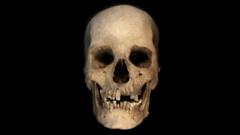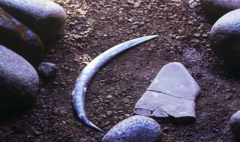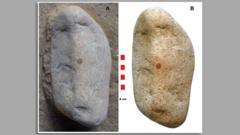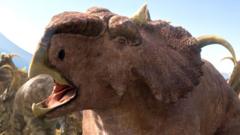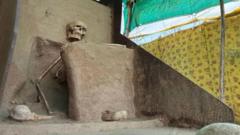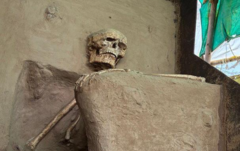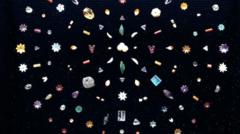"Archaeologists unearth a luxurious private bathhouse in Pompeii, shedding light on the elite lifestyle of the ancient Romans and illuminating the tragic fate of its last residents."
"Unearthing Elegance: Pompeii’s Lavish Bathhouse Discovery"
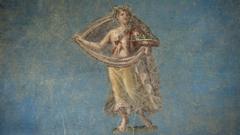
"Unearthing Elegance: Pompeii’s Lavish Bathhouse Discovery"
"Recent excavations reveal an opulent bathhouse in Pompeii, highlighting the stark social contrasts of ancient Roman life."
After two millennia of concealment under layers of volcanic ash, the ancient Roman city of Pompeii has revealed a remarkable archaeological find: a stunning private bathhouse that may be the largest ever uncovered in the city. This luxurious complex, found in a grand residence during a significant excavation, features hot, warm, and cold rooms, alongside exquisite artwork and an impressive plunge pool.
Dr. Gabriel Zuchtriegel, director of the Archaeological Park of Pompeii, expressed the profound impact of this find on our understanding of Pompeian life, noting that “the drama unfolds in each discovery, making it feel as though the inhabitants had just stepped away.”
Among the artifacts, the skeletal remains of two individuals were discovered, reflecting the disaster of Mount Vesuvius's eruption in AD 79. One skeleton belonged to a woman aged between 35 and 50, adorned with jewels and coins, while the other was a young man found in a small, barricaded room—both victims of the overwhelming pyroclastic flow that obliterated the city.
Dr. Ludovica Alesse, a conservator at Pompeii, remarked on the emotional weight of these findings, “every element speaks to us about the overwhelming tragedy they faced.” Despite the devastation, the new excavations—marking the most extensive work in a generation—are providing profound insights into daily life in ancient Rome.
The recently revealed bathhouse showcases the extraordinary lifestyle of its owner, possibly Aulus Rustius Verus, a notable politician from Pompeii. “Only the wealthiest could afford a private bath complex, and this one, being massive, confirms their elite status,” Dr. Zuchtriegel stated. The cold plunge pool could accommodate 20 to 30 users, highlighting the grandiosity of the space which included beautifully decorated walls and sophisticated heating systems for hot and warm baths.
Adjacent to the bathhouse, a banqueting room has also been uncovered, decorated with vibrant artwork, alongside a prayer room enriched with details of Roman spirituality. Meanwhile, in stark contrast, the remains of two residents who perished during the eruption were found—a man crushed in a cramped room and a woman in a fetal position, leaving a poignant reminder of the human story behind the ruins.
Significant items such as glassware and intricately designed jewelry have been recovered, providing a tangible connection to the past. Dr. Alessandro Russo, an archaeologist, emphasized the importance of these artifacts as they allow modern society to grasp the realities of ancient life.
The stark contrast between the rich and the enslaved is vividly illustrated in the excavation. The bathhouse represents opulence, while the boiler room, where slaves toiled in inhospitable heat to maintain the system, reveals a darker aspect of Roman society.
Dr. Sophie Hay encapsulated this observation, noting that mere walls separated two vastly different lives, illuminating the social disparities of the time. As the excavation continues, the team remains hopeful for more discoveries, allowing the past to spring to life once more.
Fans of archaeology can catch more about these findings in the series "Pompeii: The New Dig" airing on BBC Two.





